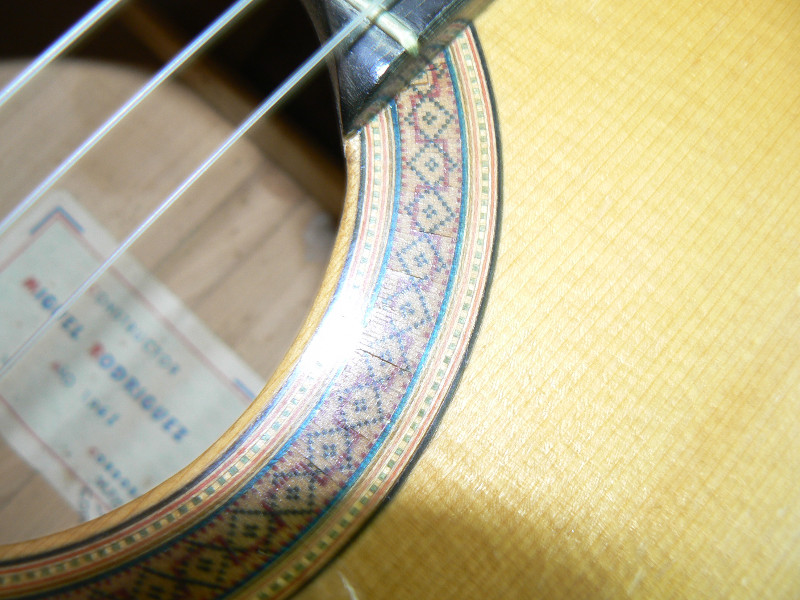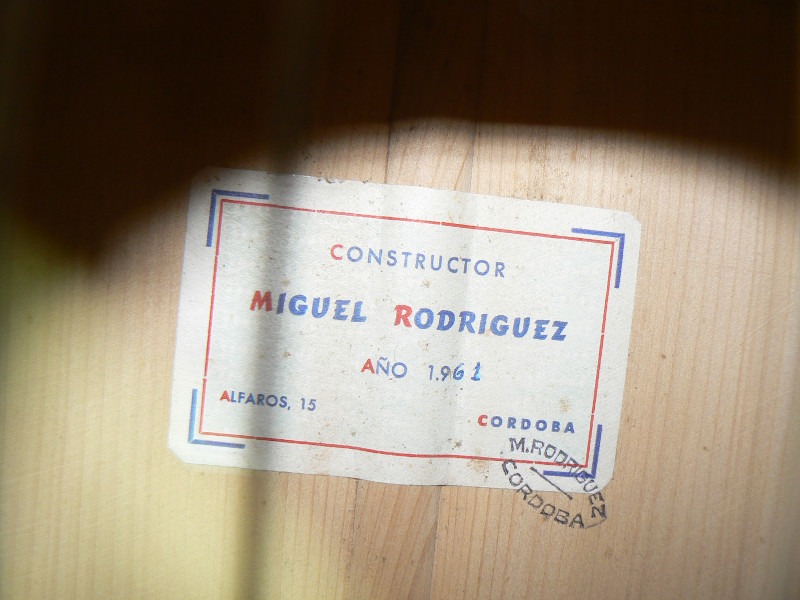I am doing more and more guitar restorations and it can be a real challenge as well as immensely satisfying. However, the best part is how much you can learn from great instruments. One of the “laws” of restorations is that you should replace nothing on the instrument; if you do so the instrument loses value. This is a relatively new point of view, traditionally if a guitar was broken, deformed or worn out you replaced the problematic parts and restored it to its status of musical instrument. These days the historical value of the instrument is often such that we want to preserve the information and that takes precedence over the playability. On the one hand I appreciate that because it has allowed me to learn from some very interesting guitars but on the other hand there are instruments which could still be making beautiful music if we restored them to playability and worried a bit less about them being “completely original”. A guitar-maker friend says that this move towards non-replacement or preserving all of the original only benefits the collectors and the dealers as it allows them to assign much higher monetary values to completely original instruments. Obviously these instruments are no longer priced as musical instruments but rather as objects of desire. Speaking of collections, I saw a similar rosette to this one on a Simplicio and made a drawing of it in order to make it one day but still haven’t got around to it.
When I get an instrument into my shop for restoration I am often asked what the instrument is worth. A concrete answer is difficult to give but when I check with my contacts I find two answers: one is how much a well-connected dealer might get for the guitar if they sell it to a collector (this allows them to make the owner a much lower offer for the guitar) and the other is how much a working musician will pay for it. Now although I have benefitted from the renewed interest in historical guitars I do believe that we are dealing with musical instruments and that is how they should be priced. Could the day come when historical guitars are no more expensive that what a working player is prepared to pay? Would that be good for players but bad for the market in general? Would I still have a market for the reproductions I make of these guitars?
Instruments by some makers are searched out by collectors and high prices are paid: Torres and Santos Hernández spring to mind. Other instruments are desired by players: Manuel de la Chica, Esteso, and Vicente Arias.  I think that the guitars of Miguel Rodríguez fall more into the second category despite their relatively high value as collector’s items. This one came into the workshop to be restored and as always I was asked what it might be worth. I did the work and found out what I could about the guitar. Turns out it was made by Miguel Rodríguez hijo and these are relatively desirable both in sound and collectability. Based on photographs, I managed to get an offer from a dealer which was subject to a substantial increase contingent on the dealer’s inspection and audition of the guitar. The client decided not to sell but that gave him a better idea of the worth of the guitar.
I think that the guitars of Miguel Rodríguez fall more into the second category despite their relatively high value as collector’s items. This one came into the workshop to be restored and as always I was asked what it might be worth. I did the work and found out what I could about the guitar. Turns out it was made by Miguel Rodríguez hijo and these are relatively desirable both in sound and collectability. Based on photographs, I managed to get an offer from a dealer which was subject to a substantial increase contingent on the dealer’s inspection and audition of the guitar. The client decided not to sell but that gave him a better idea of the worth of the guitar. This was back before I started doing recordings in the workshop so although the guitar sounded great I can’t give you anything to listen to. You can see the signature bracing pattern with the light bulb inside the guitar.
